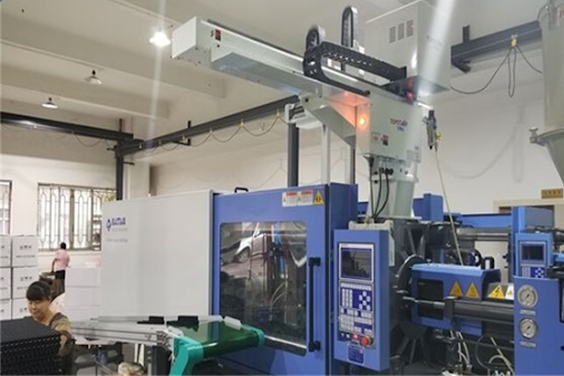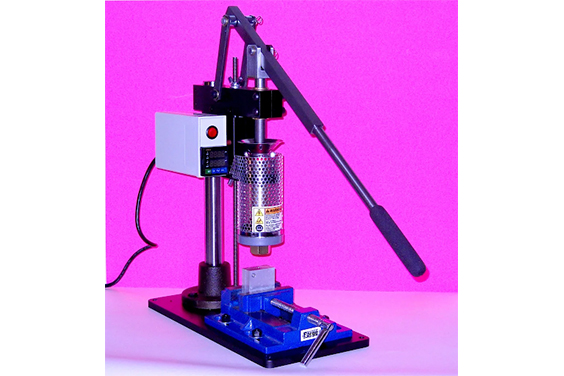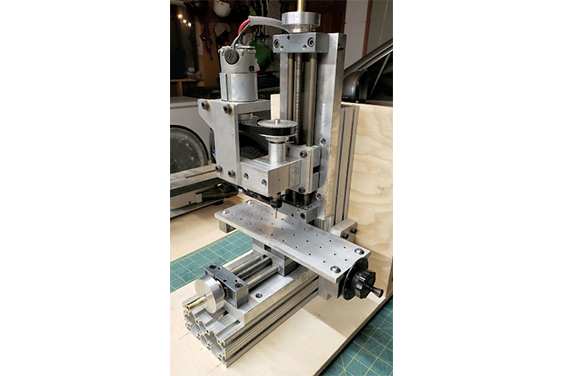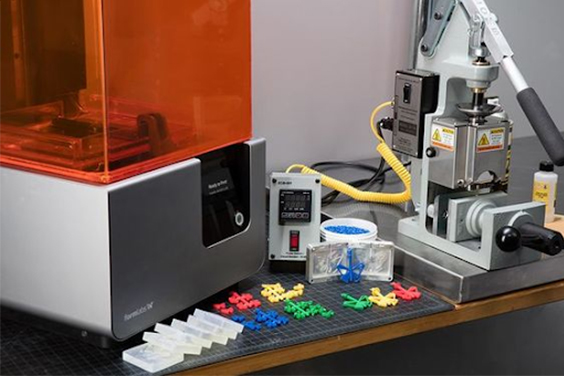DIY Injection Molding: How To Do Injection Molding At Home
- Home
- > Blog
- > DIY Injection Molding: How To Do Injection Molding At Home
Share :
Share :
Injection molding is used to make the vast majority of plastic products seen on the market today. Traditional CNC machined metal molds have very high prices and long lead times for low-volume production, despite being a perfect process for large-scale production needs.
3D printed injection molds are a time and cost-effective alternative for low-volume production. They are also less expensive than CNC machining. This article will guide you through the whole process of DIY injection molding and give you all of the tools and tips you will need to learn how to mold plastics at home.
What Is Injection Molding?
Injection molding is basically a manufacturing method that involves injecting molten material into a mold. Injection molding plastics at home can be carried out using various materials. They include metals, glassware, elastomers, confections, and, most typically, thermoplastic and thermosetting polymers. The part’s material is first supplied into a heated barrel, mixed, and then injected into a mold cavity. That is where it cools and hardens according to the cavity’s configuration.
Molds are usually manufactured by an injection mold-maker from metal, usually steel or aluminum, and precision-machined. That is done so as to form the features of the required part after a product is conceived. The process is usually done by an industrial designer or an engineer in a company that provides a plastic injection molding service. Injection molding is a popular method used for producing a wide range of parts, from minor components to whole bodies.
What You Need To Do Injection Molding At Home
We all agree that carrying out the injection molding process is not cheap. That is still the case in plastic injection molding at home. You will need a number of tools and materials to get started. It takes a good amount of cash to set up a system for DIY injection molding. On the other hand, getting the correct equipment and going through the whole learning process of how to use it will cost you both money and time.
Individuals still go for the DIY injection molding process because the prices involved are still less than the cost of a single metal mold. The time and money saved after you’re up and running will readily compensate for the initial effort.
Always make sure you compare the injection molder to your production needs before making any purchase. Industrial techniques will still be required for significant parts. This DIY injection molding process works best for creating small parts in limited quantities. Let us look at the items needed before you get started.
- A bench-top injection molding machine. The Galomb Model-B100 is a perfect example of tabletop injection molding machines. Benchtop Plastic injection molders are available in a variety of price ranges. A hand-driven plunger is used by many of the less expensive molders, while a screw or pneumatic mechanism is used by some of the more expensive equipment. Minijector, Morgan, APSX, and Micromolder solutions are also recommended. For large manufacture of small parts, desktop automated molders are a promising alternative.
- Desktop SLA 3D printer. A good example is Formlabs' Form 3. Form 3 is capable of producing precise molds with crisp features and a smooth surface finish. The result will be high-quality final molded products. Apart from DIY injection moldy, an SLA 3D printer is also useful for prototyping and various other uses throughout the product development process.
- A 3D printing material that can survive the heat and pressure applied to the mold during injection molding.
- Pellets of your choice made of plastic
- CAD software tool. To design the mold insert, use a CAD software tool of your choice, such as Blender. This can be downloaded for free.
Diy Injection Molding Steps
- Designing the mold in CAD. In order to design the mold insert, begin by selecting the CAD software tool of your choice. Use the free Blender software, but make sure the process is identical to any other CAD program. Download the blank mold insert design files, which you'll need to make your injection mold. Alternatively, you can choose to use the cavity diagrams of the master mold frames to create your own mold insert. In your CAD program, import both mold halves of the mold core as well as the 3D design that you want to make. Toggle one-half of the mold off in Blender by clicking the eye symbol in the scene explorer. Set both halves of the mold to the "wire" once your workstation is set up to your preference Now it's time to put your mold in place. Use orthographic mode to ensure that the item fully intersects with the molten plastic intake during the injection molding process. Ensure that you turn off the visibility of your current mold core and turn on the visibility of the other side. Repeat that operation until when the object is totally intersected with the intake of the mold core's other half. After you have aligned your objects, use Blender's "boolean difference" function to remove the area of the two overlapping objects. Choose the boolean option from the Modifiers Menu after selecting the first half of your item. Make sure the "difference" action is selected for the object you're cutting. Finish by applying the operator to one side and then to the other. By now your mold making progress is okay, the mold is now ready to use in the printing process. Each part should be exported.
- Printing the mold in 3D. It is very crucial that you use a material that can handle the pressure and the temperature on the mold, during the injection molding process while 3D printing the mold. In Preform, the print preparation software for Formlabs 3D printers, setting up the print takes only a few seconds. In case your mold design necessitates the use of support structures for printing, it is impoy that you make sure the mold halves are oriented in PreForm, such that the cavity faces up. This will make post-processing easier and ensure that your molded pieces have a high-quality surface. Multiple molds can be printed at once on a build platform depending on the geometry and size to maximize printing efficiency.
- Plastic Parts Injection Molding There is an option of using your benchtop plastic injection molding machine to mold the parts now that you have already created and 3D printed your mold. For injection molding, you have a wide range of materials you can pick from. Before you make any decision, think about the properties you want your product to have and the capabilities of your injection molder. Simply follow the bespoke instructions on your injection molder to make your parts fast and efficiently.
Tips To Consider When Trying DIY Injection Molding At Home
The specific strategy to DIY injection molding will differ depending on the intended design and volume but the following pointers can help you improve your chances of success.
- Consider utilizing a water bath to cool your part more quickly and reduce warping.
- Details that are embossed or engraved should be offset from the surface by at least 1 mm.
- Add 125 mm to the back of the mold plates when designing for an aluminum mold frame so as to accommodate compression forces and to ensure a full seal.
- Print the mold with a decreased layer height in order to limit the visibility of print lines on the finished product. It's worth noting that this will lengthen the printing process.
- Add two to five degrees of airflow on surfaces that are perpendicular to the draw direction to make it easier to remove the part and reduce possible mold damage.
Conclusion
There are a variety of injection mold makers around the globe but not all provide quality plastic injection molding services. FOW Mould offers a wide range of services, including plastic component and mold design, as well as mold making and molded part production. In case of any inquiries contact us.




